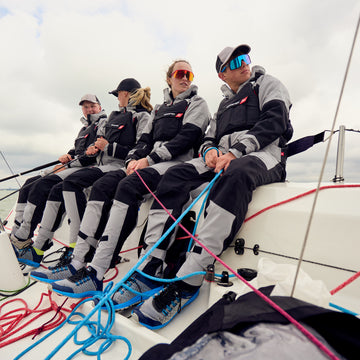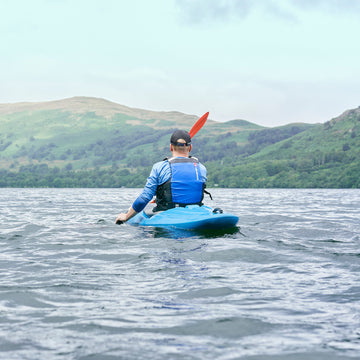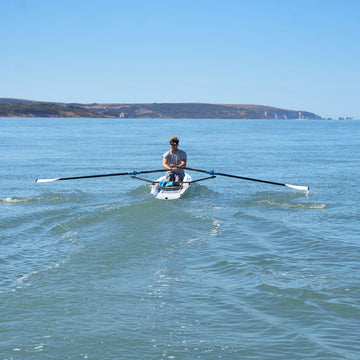I have been teaching sailing for 9 years in total and I have really enjoyed my time I have spent instructing. I first received my RYA Assistant Instructor at my local sailing club, encouraging me to help out on start sailing course and improver sessions. I then achieved my RYA Dinghy Instructor after my five-day course learning the structure and basics of the RYA method. After six years of being a RYA Dinghy Instructor I signed up for my RYA Senior Instructor which I passed in April this year. I have taught at many different centres across the country including several trips abroad to teach at a centre in Europe. Instructing is a huge learning curve and you will only improve by experience, good and bad. It is okay to make mistakes as long as you are still in a safe environment. If you are new to instructing or have been instructing for years it is always useful to hear other experiences, so here are my top tips for instructing.
- Sailing Area
It is really important to outline your sailing area before you launch your session. Tell your students exactly want you want them to do, especially if you are planning an activity which involves all the students together. For example if you are doing race starts you could get each student to sail a figure of eight around the start pin and another pinpoint, to keep them all together as the other boats are launching. Giving your students an aim helps to reduce the ‘starburst’ effect where all your students are sailing off in different directions. If there are multiple buoys or markers already in your sailing area, for example in the harbour, make it clear which marks. You can use crash helmets or old buoyancy aids attached to fixed markers to reduce confusion of which marks.
- Teach at different centres
If you can, try to teach at as many different centres as you can. It is so valuable to be around different instructors in different conditions. I have learnt so much from watching and listening to other instructors, it is invaluable. There will always be a different set of hazards and hurdles to negotiate. It is also good to be able to try different boats and techniques to work out what really works for you as an instructor. You will also learn different ways of teaching subjects that can be difficult or not as exciting. Games are also useful to have to hand, to break up teaching and to have fun with your students. Both adults and children will benefit from games, just make sure you pitch to the right level.
- Communication
Communicating with your students can be difficult when its windy or you have an engine close by. Think about where you position yourself, perhaps upwind and out of direct sunlight is most helpful. I have tried in my instructing to establish a loud voice without shouting, this may sound strange but communicating with someone who is scared or unsure will not be comforted by shouting. This is not an easy thing to do, teaching can test your patience, but your students will get a lot more out of your teaching with a good relationship. It is also good practice to talk to your students without sunglasses on. I make sure to establish whistle signals before going afloat.
- A whistle signal with both hands above my head in a triangle is Go Home- all boats back to shore that’s the end of the session.
- A whistle signal with both hands on top of my head is everyone to me- all boats get close to my RHIB and stop.
- A whistle signal with one hand on my head and the other hand pointing to a boat is that boat to me
- A whistle signal with me pointing to my engine is follow my RHIB- a useful technique from regrouping your students.
- A whistle signal with my arm raising up and down, is slow down
This is no means a full list but using a few whistle signals can reduce the amount of shouting on the water and allows lots of boats to follow an instruction simultaneously.
- Purchase some wetnotes
It is so useful to have some kind of waterproof notebook and pencil out on the water with you. If you are teaching large groups it can be useful to jot down the names of your students and what boats they are sailing. Knowing the names of your students from the start of the course creates a good relationship. Jotting down any feedback is good to refer to later in debriefs. Race coaching may require a larger notebook for race results, I prefer something small to have tucked inside my buoyancy aid.
- Capsizing
There is a huge split here for teaching adults and kids. Adults will often be frightened of capsizing. Some fear comes from not knowing how the boat will react and some from fear of not being climb back into the boat once its upright. If your adults are particularly nervous, on a calm day in deep water be with them for there capsize drill, either close by in a RHIB or get into the water with them (Make sure your not leaving your RHIB unattended). They will greatly appreciate you coaching them through. Teach them the best way to climb back into the boat. If it’s a small dinghy then try and get them to the toestrap, on larger dinghies with high sides the transom can often be lower. Kids however after their first capsize will always want to be in the water capsizing, which can be quite disruptive to running a smooth session. If the weather is suitable tell your students when they are allowed to capsize from the off, I usually tell them the end of the day, one at a time in the last session to avoid unnecessary cold students all day.
- Equipment
When you are using club boats its no secret that they will not be in the best condition. Sorting out rigging issues is frustrating in the middle of a session. Having small bits of ropes (Instructor String), a bobble and shackle in your buoyancy aid pocket will save you time and frustration. If you are able to spend some time before the students arrive or whilst another session is running, to check over the boats for any issues, it is always easier to sort problems out on shore rather than during your session. Also look at your main areas of teaching. On shore set up an area for your teaching. What resources might you need? I check to make sure I have access to a whiteboard and WORKING pens. Make sure the area is presentable for your students, having enough chairs and a clean non-sandy floor is always a good start. I thoroughly enjoy my time teaching and I hope this helps you with your instructing as we all need to learn from each other. Please feel free to email me at
abi@roostersailing.com if you have any questions or queries for instructing.











 Select Store
Select Store
 EU
EU
 US
US
